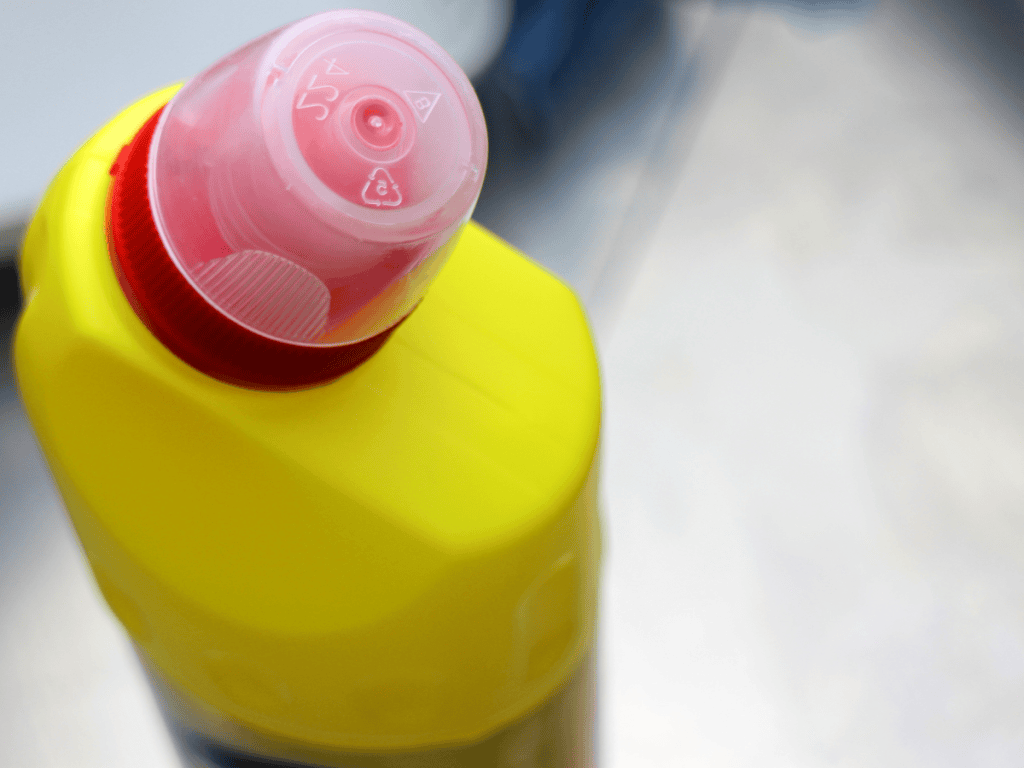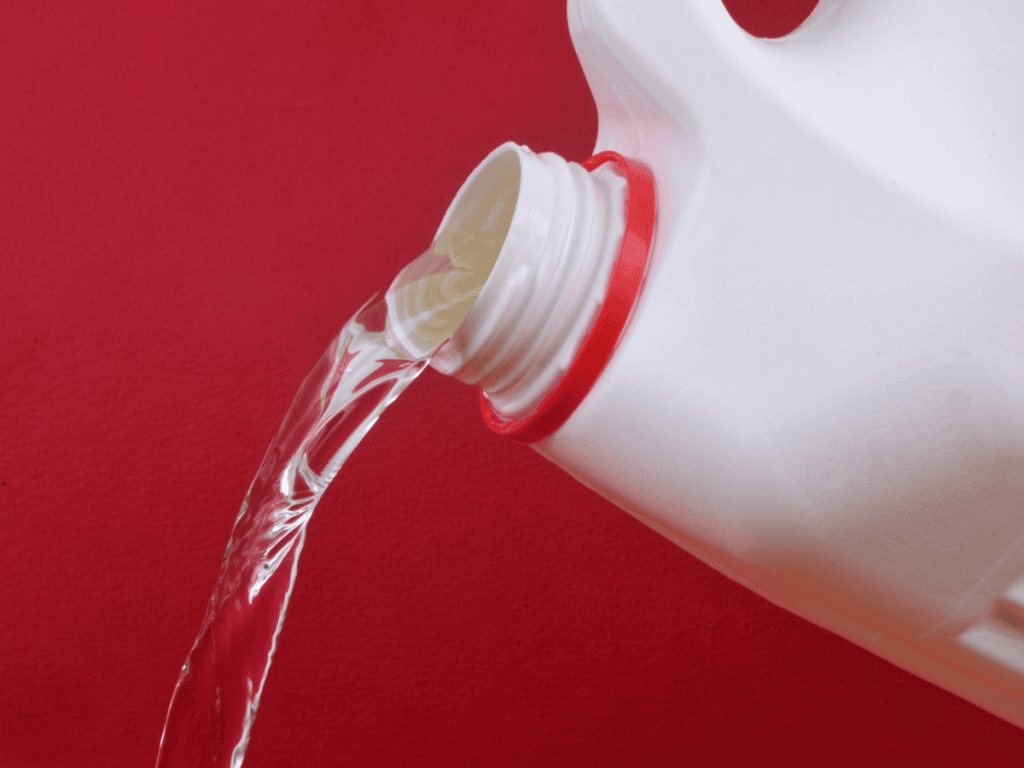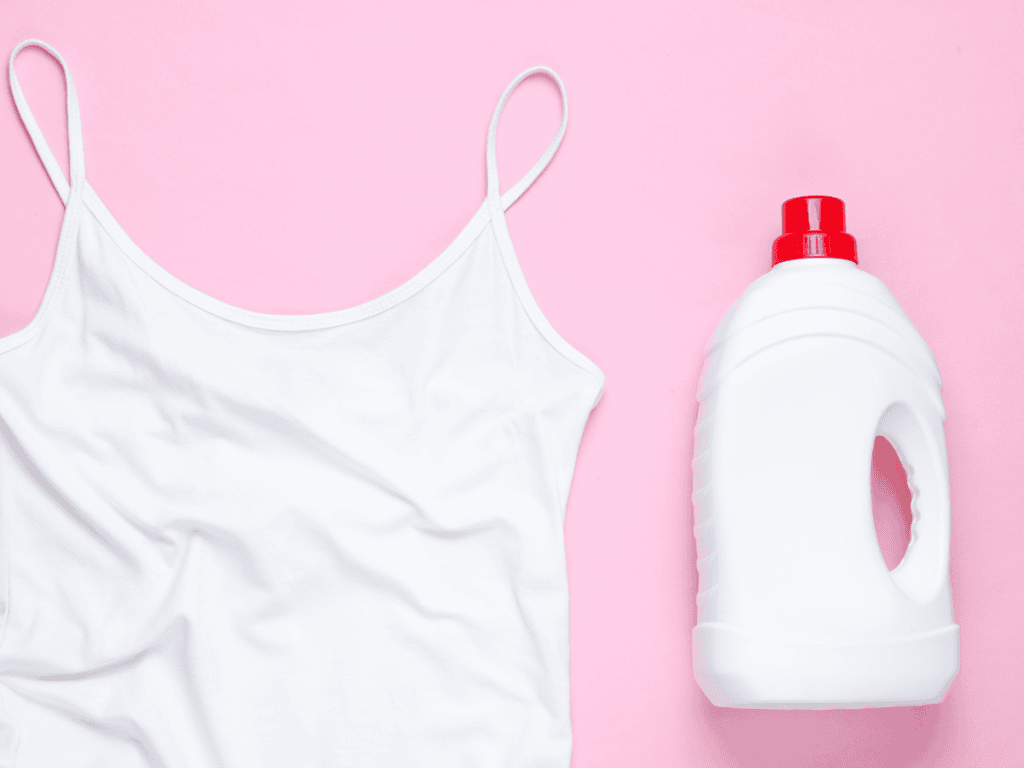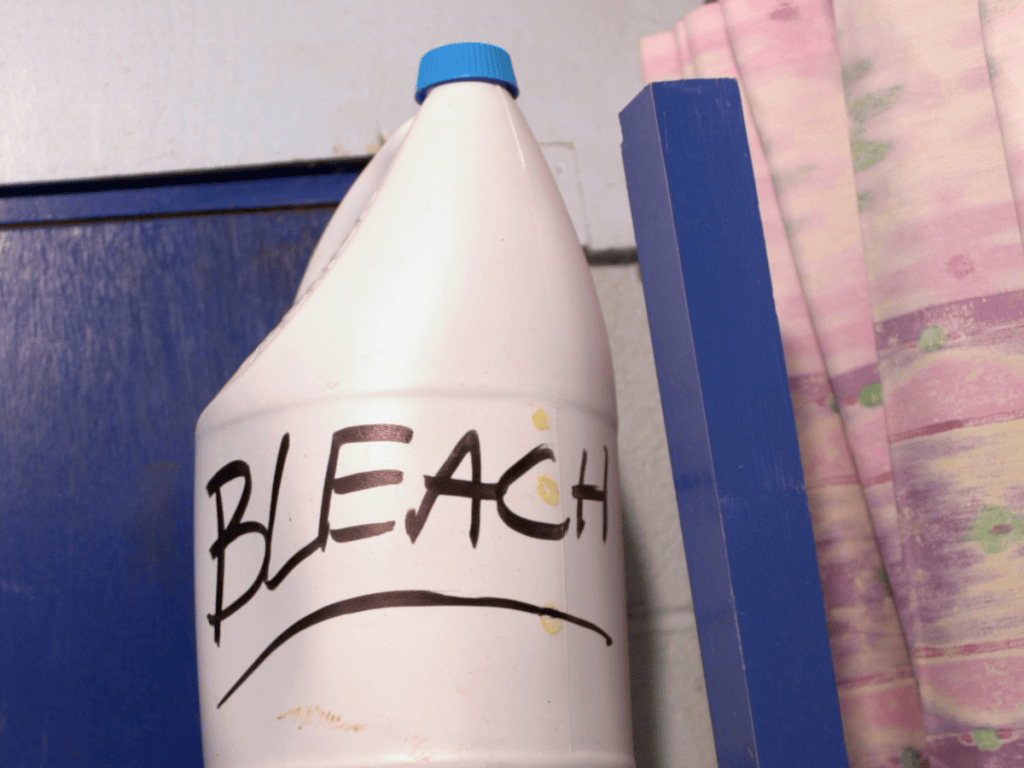When considering is bleach bad for the environment, I look at its widespread use as a potent cleaning agent. Despite its efficacy in disinfecting and whitening, the environmental repercussions cannot be overlooked. The chemicals in bleach are highly reactive, which can cause various environmental issues, especially when not handled properly.
Furthermore, the notion that bleach does not biodegrade introduces a significant concern. As an inorganic substance, it poses a long-term threat to ecosystems, suggesting that seeking alternative bleach would be a more sustainable choice for our planet’s health. The impact of bleach on the environment warrants a closer look at its components and effects.
Investigating the Components of Bleach
Understanding why bleach is bad for the environment requires an investigation into its makeup. Bleach is primarily composed of sodium hypochlorite, a chemical known for its ability to eliminate bacteria and germs. This makes it a popular choice for household cleaning, but the environmental cost of its use can be high.
While bleach is sodium hypochlorite, it also contains other chemicals contributing to its cleaning power. However, these components can also contribute to environmental degradation, especially when bleach is not used or disposed of correctly. This highlights the need to understand its chemical composition further.
The Chemical Composition of Bleach
The question of whether bleach is bad for the environment can be partly answered by evaluating its chemical composition. As a chlorine-based product, bleach contains compounds that can be hazardous to both natural environments and human health when released indiscriminately.
While bleach’s ability to disinfect has made it a household staple, the environmental implications of its use cannot be ignored. Its chemical makeup is a double-edged sword, providing robust cleaning capabilities while posing potential risks to ecosystems and waterways.
Biodegradability of Bleach: Fact or Fiction?
Due to its liquid form and prevalence in household cleaning, it’s a common misconception that bleach might be harmless to the environment after use. However, contrary to popular belief, bleach does not biodegrade, remaining an active chemical that can continue to react within the environment.
This persistence in the environment amplifies the concern over its ecological impact. As bleach lingers without breaking down, it can cause prolonged harm to ecosystems, making it clear that we must be cautious with its use and disposal.

Bleach Manufacturing Process – Is Bleach Bad for the Environment
The production of bleach involves several industrial processes that can be energy-intensive. From sourcing raw materials to the chemical reaction needed to produce the final product, the energy consumption is significant, contributing to environmental concerns.
Each step in the manufacturing process, including the handling and transporting of raw materials like caustic soda and calcium hypochlorite, adds to the overall environmental footprint of bleach, making it important to consider sustainable practices in its production.
Energy Consumption
Energy consumption in manufacturing bleach is considerable, as the production process requires substantial electrical and thermal energy. The chemical reaction to synthesize sodium hypochlorite, the active ingredient in bleach, is particularly energy-intensive.
This high energy demand contributes to the overall environmental impact of bleach, emphasizing the importance of scrutinizing the energy sources and efficiency of the manufacturing process to mitigate its ecological footprint.
Carbon Footprint
The carbon footprint of bleach production is a significant environmental concern. The use of fossil fuels in the manufacturing process emits greenhouse gases, which contribute to climate change. This aspect of production must be addressed to reduce the negative environmental impact of bleach.
Minimizing the carbon footprint can include optimizing manufacturing processes, utilizing renewable energy sources, and implementing carbon capture technologies. Such initiatives are crucial for making bleach production more sustainable.
Sustainable Practices in Manufacturing
Considering the environmental toll of bleach, incorporating sustainable practices into its manufacturing process is imperative. This can include using renewable energy sources, recycling waste products, and reducing emissions throughout production.
Adopting these practices helps mitigate the negative impacts of bleach on the environment and aligns with a growing consumer demand for environmentally responsible products. Transitioning to more sustainable methods is a step towards a less harmful production model.
The Environmental Toll of Bleach
The use of bleach in household cleaning and industrial applications has raised concerns over its environmental toll. Treatment systems and processes are in place to mitigate some of the impacts, but the high reactivity of household bleach can overwhelm these safeguards, leading to broader ecological consequences.
During the COVID-19 pandemic, for example, the increased use of disinfectants, including bleach, raised concerns about their presence in Wuhan surface waters. This highlighted the potential for widespread contamination and food chain disruption, underscoring the importance of responsible use and disposal to protect our environment.
Water Pollution: The Menace Below the Surface
Water pollution is a pressing concern associated with the use of bleach, impacting aquatic ecosystems in multiple ways. As bleach is commonly used in households and industries, the discharge of residual bleach into water bodies poses a significant threat.
Discharge into Water Bodies
When bleach-containing wastewater is released into rivers, lakes, or oceans, it introduces chemicals like sodium hypochlorite into aquatic environments. This discharge can happen through various means, including improper disposal or industrial effluent. The presence of bleach in water bodies disrupts the natural balance, affecting the flora and fauna that rely on these ecosystems.
Formation of Harmful Byproducts
The chemical composition of bleach, particularly sodium hypochlorite, can lead to the formation of harmful byproducts in water. Chlorinated organic compounds, such as dioxins and trihalomethanes, may be produced during the interaction between bleach and organic matter in the water. These byproducts have been linked to adverse health effects and can persist in the environment, contributing to long-term pollution.
Impact on Aquatic Ecosystems
The discharge of bleach into water bodies has far-reaching consequences for aquatic ecosystems. Aquatic plants and animals are sensitive to changes in water quality, and the presence of bleach can disrupt their natural habitats. The toxicity of bleach can harm fish, amphibians, and other aquatic organisms, leading to population declines and ecosystem imbalances.
Air Pollution: The Invisible Threat Above
The use of bleach affects water and contributes to air pollution, posing risks to respiratory health and overall air quality.
Release of Chlorine Gas
Bleach contains chlorine, and chlorine gas may be released into the air when used or disposed of. This gas is a respiratory irritant and can cause discomfort and health issues, especially in enclosed spaces. Additionally, outdoor release of chlorine gas can contribute to regional air pollution, affecting communities near manufacturing or industrial sites.
Respiratory and Health Concerns
The release of chlorine gas from bleach can lead to respiratory problems, especially for individuals with pre-existing conditions such as asthma or chronic obstructive pulmonary disease (COPD). Inhalation of chlorine gas may cause coughing, wheezing, and shortness of breath. Long-term exposure can exacerbate respiratory conditions and pose serious health risks.
Effects on Air Quality
The emission of chlorine gas from bleach contributes to the degradation of air quality. Chlorine reacts with other air pollutants, forming secondary pollutants that can further compromise air quality. This can have broader implications for public health, with potential long-term effects on respiratory and cardiovascular systems.

Soil Contamination: The Silent Intruder Beneath Our Feet
Bleach impacts water and air and can contaminate soil, affecting plant life and posing long-term risks to soil health.
Runoff and Soil Absorption
Rainfall or irrigation water that comes into contact with surfaces cleaned with bleach can result in runoff, carrying bleach and its residues into the soil. The soil can absorb these chemicals, leading to contamination. This process is particularly concerning in agricultural areas, where using bleach-containing cleaning agents may affect crops and soil quality.
Impact on Plant Life
Bleach contamination can have detrimental effects on plant life. The toxic nature of bleach can inhibit the growth of plants, affect nutrient absorption, and disrupt the soil’s microbial balance. Plants exposed to bleach may exhibit signs of stress, including wilting, discoloration, and reduced yields.
Long-term Soil Health
The long-term consequences of bleach-induced soil contamination extend beyond immediate plant impact. The accumulation of bleach residues can degrade soil health, affecting its ability to support diverse plant life and maintain essential ecological processes. Sustainable soil management practices become crucial to mitigate these long-term effects.
Does Bleach Break Down in Soil?
Contrary to some beliefs, bleach does not readily break down in soil. While sunlight and water can influence its decomposition rate, bleach remains active for an extended period, causing potential damage to the soil’s ecosystem.
Before bleach decomposes, it can destroy the organisms within the soil, jeopardizing the soil’s ability to sustain life. This lack of biodegradability is a stark reminder of the long-term environmental risks associated with its use.
Effects on Aquatic Life and Water Quality
The effects of bleach on aquatic life and water quality are a cause for concern. When bleach enters waterways, it can be toxic to fish and other aquatic organisms, disrupting ecosystems and affecting biodiversity.
Additionally, bleach in water can alter its quality, making it unsafe for both wildlife and human consumption. This reinforces the need to carefully manage bleach disposal to protect our water resources.
Different Types of Bleach and Their Environmental Effects
As someone curious about cleaning products and their impact on the environment, I’ve delved into the world of bleach to unravel its various types and their effects on nature.
Chlorine Bleach: The Common Household Warrior
Chlorine bleach is the go-to bleach for many households. It’s tough on stains and germs, making it a popular choice. However, its environmental impact isn’t as gentle as its cleaning power. When chlorine bleach gets into waterways, it can turn into harmful substances like dioxins and persistent organic pollutants. These pollutants can harm aquatic life and even enter the food chain.
Oxygen Bleach: A Greener Alternative
In my quest for eco-friendly cleaning options, I stumbled upon oxygen bleach. This type of bleach uses hydrogen peroxide or sodium percarbonate as its active ingredient. The good news? It breaks down into oxygen and water, leaving no harmful residues behind. Unlike chlorine bleach, it doesn’t contribute to the formation of harmful compounds in water, making it a greener choice.
Color-Safe Bleach: Mild yet Effective
Color-safe bleach is designed to be gentler on colored fabrics, using hydrogen peroxide as its active ingredient. While it’s less harsh than chlorine bleach, it’s still essential to use it wisely. It breaks down into water and oxygen during use, posing fewer environmental risks compared to chlorine bleach. However, always follow the recommended usage guidelines to minimize any potential impact.
Choosing Wisely: Making Informed Decisions
As consumers, we have the power to make informed choices. Opting for bleach alternatives or selecting environmentally friendly bleach options can contribute to a healthier planet. Reading labels, understanding ingredients, and being aware of the potential environmental effects empower us to be responsible users of cleaning products.

Human Health and Bleach Exposure
While the proper use of bleach can help mitigate some health effects, such as wearing a mask and gloves during its application, the negative health implications of bleach exposure cannot be fully eliminated. The chemical’s potency means that even with precautions, there is a risk of adverse reactions, particularly in sensitive individuals.
Those with respiratory conditions like asthma may experience exacerbated symptoms when exposed to bleach. The potential for respiratory inflammation and discomfort underscores the importance of careful handling and conscientious use of bleach to minimize health risks.
The Risk to Human Health from Bleach
The health effects of bleach on humans can range from mild to severe, depending on the level of exposure. Inhaling the fumes can lead to respiratory inflammation, exemplified by symptoms such as coughing, chest tightness, and general discomfort while breathing. For individuals with conditions like asthma, the negative health repercussions can be even more pronounced.
The proper use of bleach must include wearing a mask and gloves to minimize direct contact and inhalation of toxic substances. When mixed improperly, bleach can release chlorine gas, posing a serious threat to public health. It’s imperative never to ingest bleach as it can cause severe reactions.
Cytotoxicity and Potential Carcinogenic Effects
Bleach has cytotoxic properties, which means it can destroy cells, a concern particularly relevant in treatment plants where bleach might not be fully neutralized before reaching natural water systems. This cytotoxicity can have broader implications, potentially affecting the health of ecosystems and humans.
Furthermore, studies are ongoing to determine the potential carcinogenic effects of prolonged bleach exposure. The presence of bleach and its byproducts in water sources poses a risk to aquatic life and to human populations that depend on these water sources for drinking and agriculture.
Sustainable Alternatives to Bleach
While bleach is a common household cleaner due to its efficacy in eliminating germs, its environmental and health impacts have led to the search for sustainable alternatives. These alternatives aim to provide the same level of cleanliness without the negative consequences of bleach.
Companies and consumers are exploring less harsh options for the environment, focusing on green chemistry and products that degrade more easily without leaving harmful residues.
Eco-Friendly Bleach: A Viable Option?
Eco-friendly bleach options are emerging, offering a compromise between effective cleaning and environmental responsibility. These products often contain alternative active ingredients less persistent in the environment, reducing the risk of long-term ecological damage.
While they may not possess the same potency as traditional bleach, eco-friendly bleaches are a viable option for those looking to reduce their environmental footprint and maintain safer cleaning practices.
Is Clorox Bleach Biodegradable?
Like many chlorine-based bleaches, Clorox bleach is not biodegradable in the traditional sense. When released into the environment, it can persist and cause ecological disruptions. It’s important to note that while bleach can break down into salt and water, it can release harmful byproducts.
Thus, while Clorox bleach may lose its potency over time, the environmental concerns associated with its use and disposal remain significant, driving the need for more sustainable cleaning solutions.
Proper Disposal of Bleach
Disposing of bleach responsibly is essential to minimize its impact on aquatic life and the environment. Bleach should never be poured into waterways or onto the land, where it can harm organisms and disrupt ecosystems.
Instead, it should be diluted with water to reduce its concentration and then disposed of through the sewage system, where it can be treated to minimize environmental harm.
Best Practices for Disposing of Bleach Safely
To dispose of bleach safely, it is vital to use up the product as intended rather than discarding it. If disposal is necessary, diluting the bleach with water is crucial to lessen its potency before it enters the sewage system.
This practice helps ensure that the treatment it undergoes in the sewage system will be sufficient to neutralize its biocidal properties, thereby protecting biodiversity and preventing environmental contamination.
Key Insights and Responsible Practices
The sewer system is critical in mitigating human health impacts and environmental damage from bleach. Treatment plants are designed to handle such toxic substances but may not always be effective if bleach enters the system in high concentrations.
Therefore, responsible practices, such as avoiding excess use and ensuring proper dilution, are vital to reducing bleach disposal’s long-term human health impacts and environmental burdens.

Tips for Responsible Bleach Use
Responsible use of bleach begins with understanding how to use it safely and effectively. This means following label instructions and ensuring adequate ventilation to prevent inhaling harmful fumes.
It also includes knowing when bleach is necessary, and alternatives could be just as effective without the associated risks.
Dilution Guidelines
It’s important to dilute bleach according to the guidelines provided on the product label. Proper dilution reduces bleach concentration, making it safer and limiting the potential for harmful chemical reactions.
This practice protects your health and minimizes the environmental impact when the bleach is disposed of.
Proper Disposal Methods
Proper disposal of bleach involves diluting it with water and pouring it down the drain to enter the sewage system. This method allows treatment facilities to process and neutralize the bleach, preventing it from causing harm to the environment.
Always consult local waste management authorities for specific guidelines, as some regions may have unique regulations for disposing of household chemicals.
Alternatives for Specific Applications
Specific applications, such as disinfecting surfaces during a pandemic, have necessitated the use of bleach. However, overuse can lead to environmental harm, prompting the need for less aggressive alternatives.
These alternatives not only prevent the smell of chlorine in enclosed spaces but also reduce the risk of exacerbating respiratory conditions and environmental pollution.
Alternatives to Bleach
Chlorine bleach has been a staple in cleaning practices, but its environmental footprint is a growing concern. Alternatives to chlorine bleach are gaining popularity as they offer effective cleaning solutions with a reduced ecological impact.
These alternatives are becoming more accessible and are encouraged for those looking to make environmentally conscious choices in their cleaning routines.
Eco-friendly Cleaning Products
Eco-friendly cleaning products often incorporate substances like hydrogen peroxide, a less harmful alternative to traditional bleach. Hydrogen peroxide is known for its disinfectant properties and breaks down into water and oxygen, making it a safer choice for users and the environment.
As consumers become more health and eco-conscious, the demand for products that balance efficacy with safety is rising.
Natural Disinfectants
Natural disinfectants offer a greener alternative to harsh chemical cleaners. These products use less toxic and more environmentally friendly ingredients, such as vinegar, essential oils, and baking soda.
While they may work differently than traditional disinfectants, they can still be effective for many cleaning tasks, contributing to a healthier home and planet.
DIY Cleaning Solutions
Creating my cleaning solutions has been a game-changer for me, especially regarding reducing my environmental footprint. I’ve found that simple household items like baking soda can be remarkably effective for tackling grime and odors. Baking soda, in particular, is a gentle abrasive and deodorizer, making it perfect for scrubbing sinks or freshening carpets. By avoiding harsh chemicals, not only do I keep my home clean, but I also contribute to a healthier environment.
Another staple in my DIY cleaning arsenal is a mixture of vinegar and water. I mix them in equal parts and pour the solution into a spray bottle, and I have a powerful disinfectant that’s safe for most surfaces. I like adding a few drops of essential oils for a touch of fragrance. This homemade spray is excellent for cleaning countertops and toilets without leaving behind the harmful residues that many commercial products do. It’s reassuring to know that what I’m using is non-toxic and safe for my family and pets.
A Balanced Perspective on Bleach Use
Bleach, praised for potent disinfecting abilities, is a household cleaning staple due to its active ingredient, sodium hypochlorite. Biodegradable, it breaks down into salt and water. However, environmental and health concerns arise if not used and disposed of properly. Incorrect use can harm skin and eyes, with inhalation of fumes being detrimental. While beneficial for hygiene, it’s crucial to balance its advantages with the potential for ecological disruption. Responsible bleach use entails following dilution guidelines, discerning its necessity, and considering alternatives when appropriate. This ensures it doesn’t harm the ozone layer or contribute to environmental degradation.